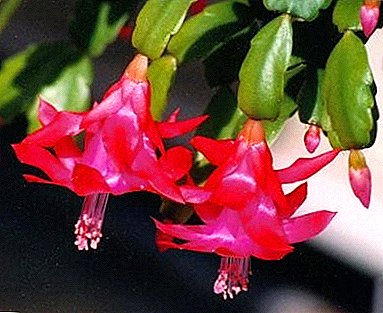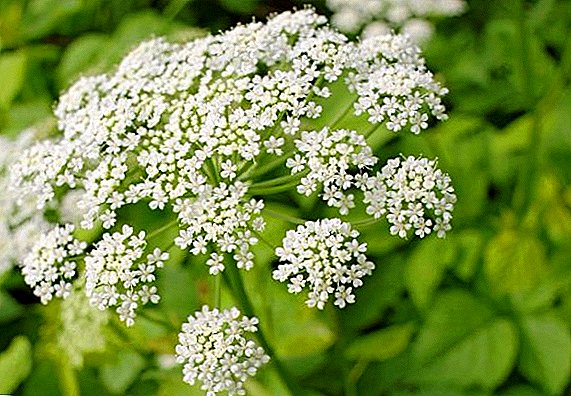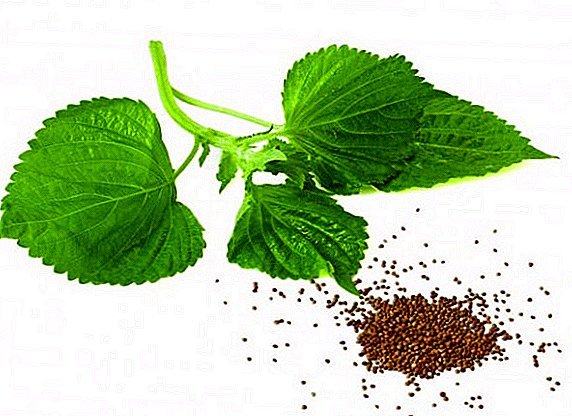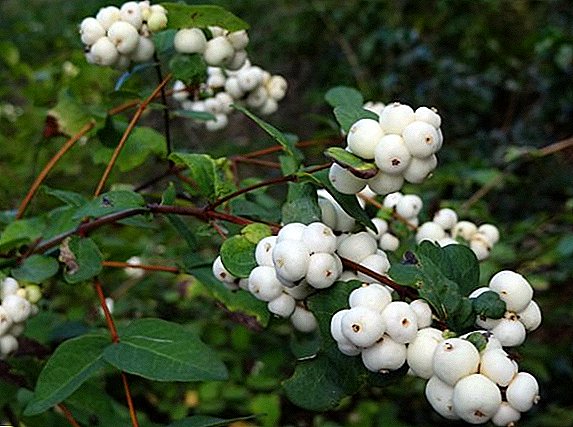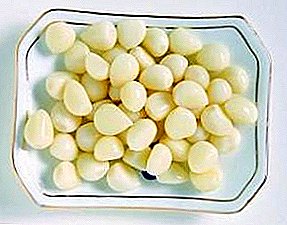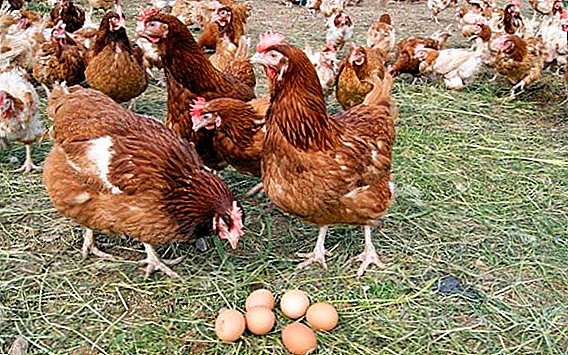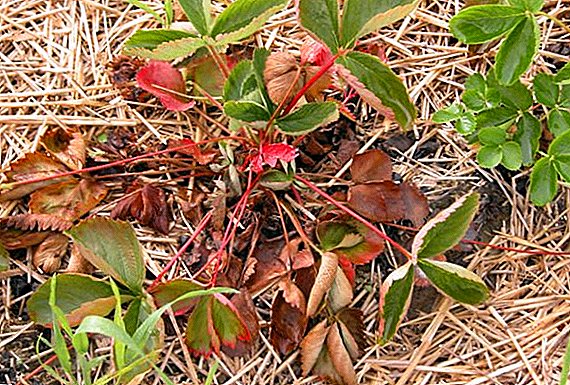 Combating agricultural weeds is an eternal topic. Chemists are trying to provide gardeners and field farmers with reliable and effective means.
Combating agricultural weeds is an eternal topic. Chemists are trying to provide gardeners and field farmers with reliable and effective means.
Among them, Milagro, a herbicide that cannot be used without first reading the relevant instructions, confidently occupied its niche.
Active ingredient and preparative form
The study of instructions for the use of the herbicide Milagro begins with clarifying the question of what substance in its composition has the desired effect on plants that prevent the normal development of maize.
It is called nicosulfuron, a member of the sulfonylurea chemical class. The drug is available in the form of a suspension concentrate (40 g / l), sold in 5-liter cans.  It is possible and other (liter, for example) packaging containing 240 g / l nicosulfuron.
It is possible and other (liter, for example) packaging containing 240 g / l nicosulfuron.
Activity spectrum
This substance systemically selectively inhibits and destroys weed cereal (perennial and annual) plants, as well as a number of dicotyled weeds on the fields where corn is grown (for silage and grain).
Did you know? The term "herbicide", meaning a substance that destroys plants, appeared in 1944Not a complete list is as follows:
- humay;
- highlanders;
- Galinsog small-flowered;
- dope
- star wheel is average;
- white mary;
- bluegrass;
- forget-me-not;
- wild oats;
- black hairy;
- Rosicka;
- bristle

Benefits
The advantages of this herbicide for corn are determined by its high adaptability, the result of which are:
- The selectivity of action, in no way harming the culture itself.
- Effective against weeds that are not sensitive to other substances (wheat grass, gumai, other harmful plants, germinating from seeds and rhizomes).
- Let's apply at all stages of growth of corn (except pre-emergence).
- Comfortable simplified procedure for obtaining a working solution of the desired quality (due to additives from surfactants).
- Quickly breaks up, hitting the ground.

Did you know? In the Middle Ages, they tried to use ashes, salt, as well as various slags as herbicides, which led, to no small degree, to the death of the cultivated crops.
Mechanism of action
As already mentioned, Milagro acts selectively - even its double dosage in the working mixture will not harm the corn.
At the same time, a preliminary test for phytotoxicity of the fields where hybridization is planned will not hurt.
Efficiency in relation to weedy objects appears twice:
- first, their development is inhibited and completely stopped;
- then, after some time, the weeds die without a trace.
The peculiarity of the action of this herbicide is also the fact that only plants which shoots appeared at the time of application are exposed to it. Therefore, to control weeds that have appeared after chemical exposure, inter-row cultivations are carried out (after one and a half to two weeks). The same work is not allowed at least a week before spraying.
Therefore, to control weeds that have appeared after chemical exposure, inter-row cultivations are carried out (after one and a half to two weeks). The same work is not allowed at least a week before spraying.
For the protection of corn crops also apply: "Stellar", "Gezagard", "Harmony", "Dialen Super", "Titus", "Prima", "Galera", "Grims", "Estheron", "Dublon Gold", " Lancelot 450 WG ".
When and how to spray
The Milagro herbicide is a post-emergence preparation, but flexibility can be shown when choosing the timing of the spraying.
For the daily period, windlessness is important (so that the drug does not get on crops grown nearby) and part of the daylight hours — treatment takes place in the morning or in the evening.
Seasonal specifics appear with the integrated consideration of all factors:
1. At what biological stage of development are the weeds (it is desirable that this be when they are actively vegetating, and the warming up of air is in the range from 15 to 30 ° C).
Important! The maximum effect can be achieved at the stages characterized by a certain number of leaves in weeds (up to 4 in broadleaf annuals and 3-5 in cereals), stem height - from 20 to 30 cm in perennial cereal, outlet diameter (5-8 cm) - in the osotov, length of the shoots (10-15 cm) - at the bindweed (the last two weeds belong to perennial root shoots).2. What is the degree of corn screening of weeds and soil (the standard is the presence of a cultural plant from 3 to 8 leaves). 3. What is the weather on the day of spraying (significant dew and rain do not resemble at all, and precipitation that fell 4 or more hours after the procedure does not matter).
 The consumption of the herbicide Milagro is determined based on the instructive norm (1-1.5 liters per hectare), as follows: after checking the cleanliness of the tank, pipelines, sprayers and the entire sprayer as a whole, the volume and uniformity of the supply of the herbicidal water per unit area is calculated. In general, it turns out that 0.2-0.4 liters of working fluid is consumed per hectare.
The consumption of the herbicide Milagro is determined based on the instructive norm (1-1.5 liters per hectare), as follows: after checking the cleanliness of the tank, pipelines, sprayers and the entire sprayer as a whole, the volume and uniformity of the supply of the herbicidal water per unit area is calculated. In general, it turns out that 0.2-0.4 liters of working fluid is consumed per hectare.Details of the preparation of the working solution:
- The process is carried out right before the spraying procedure.
- Half-tank is filled with clean water.
- The agitator is turned on and, as the remaining half of the capacity is filled with the preparation, the consumption of which you have already calculated, continues to work.
Important! The uniformity of the mixture obtained in this way is maintained during spraying, that is, it is not necessary to switch off the agitator.If Milagro is used in the same solution with other pesticides, then it is added after "SP" and "EDC" and before "SC" and "CE". This takes into account that:
- the next substance is not added until the previous one is completely dissolved;
- If there is a component in a package that also dissolves in water, then it is added first.
Action speed
The drug is considered high-speed, you can count on:
- stopping the growth of harmful plants after 6 hours;
- their final death - in a week.
 These terms are optimal for favorable conditions. They may lengthen due to the fact that:
These terms are optimal for favorable conditions. They may lengthen due to the fact that:- unfavorable weather conditions (at the time of spraying and the initial period of action of the substance);
- the weeds have reached the peak of their physiological state (or are at the stage of confident achievement).
Period of protective action
Protection is valid for 1.5-2 months. More precisely, the dates can be calculated (also approximately) during the field season, they will be affected by:
- types of weeds that have appeared;
- phasing in the development of weeds;
- weather in the period after herbicidal treatment.
Compatibility
The incomplete list of pesticides compatible with Milagro is quite large: Banvel; EDC; BP; Dual Gold; Callisto; Karate Zeon; CE; ISS; SC; JV  Compatibility is expressed not only in the features of the chemical interaction, but also in the timing of the application.
Compatibility is expressed not only in the features of the chemical interaction, but also in the timing of the application.
Important! Even being aware of the fundamental compatibility of substances, each time check it additionally (according to tare labels) before starting to join the components into the working tank mixture.Not to mention the well-known cases of incompatibility:
- Burns of cultural foliage can be caused by a Milagro tank mixture with a laitagran and bazagran.
- Sharing with herbicides created on the basis of 2,4-D will not lead to the effective eradication of grass weeds, because there are antagonisms in their control between the weed remedies.
Crop rotation after processing
The variability of crop rotation after the application of Milagro is wide: in the next field season, the seeding of any crops is allowed.  However, there are some features that must be taken into account by business executives:
However, there are some features that must be taken into account by business executives:
- The considered herbicide has a tendency to very rapid degradation on soils with an acidic reaction less than pH7, if they are saturated with biologically active microorganisms, warm up well and hold moisture. Then, if needed, it is possible to re-seed the field either in spring - again with corn (you can still have soy, but in this case plowing is needed) or in the fall, but with winter wheat or barley.
- Attention should be paid to the weather conditions in which alkaline (pH> 8) land plots were located before the subsequent sowing campaign - drought during this period can negatively affect the development of the next planted crop.
For the latter case, it is necessary to know the level of negative perception by the garden and field plants of this herbicide (from highest to lowest):
- sugar beet;
- tomatoes;
- buckwheat;
- wheat;
- barley;
- rape;
- oats;
- soy.

Shelf life and storage conditions
The drug is valid for three years from the date of manufacture (when buying, pay attention to the inscription on the package). In the original packaging it should be stored (it should be tightly closed). Temperature drops are allowed from -5 to + 35 ° С. The room must be dry.
Good corn can be grown by protecting it in time from weedy pests. Milagro will help you.


